Dual-MEMS-Resonator Temperature-to-Digital Converter with 40µK Resolution and FOM of 0.12pJK2
IEEE International Solid-State Circuits Conference 2016
Precision Oscillator Applications
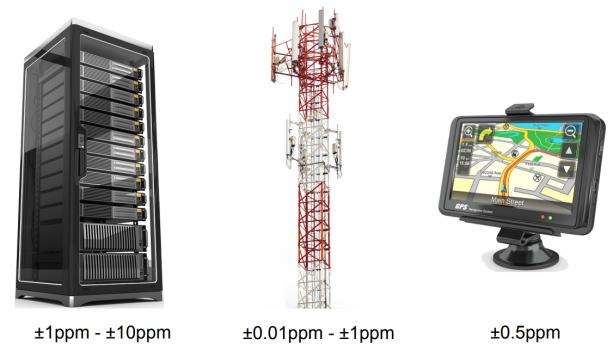
Precision Oscillator Resonators
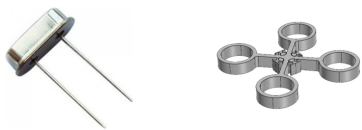
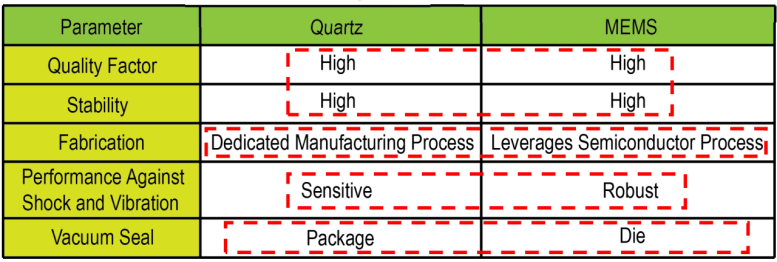
MEMS-Based Programmable Oscillator Package
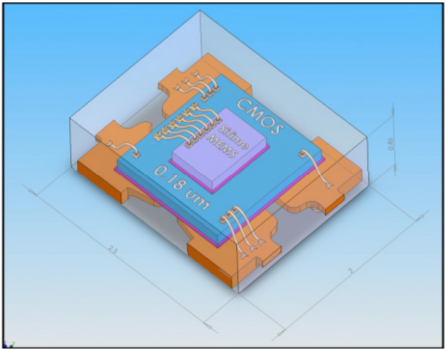
MEMS die, CMOS die and leadframe in a package
MEMS-Based Programmable Oscillator (XO)
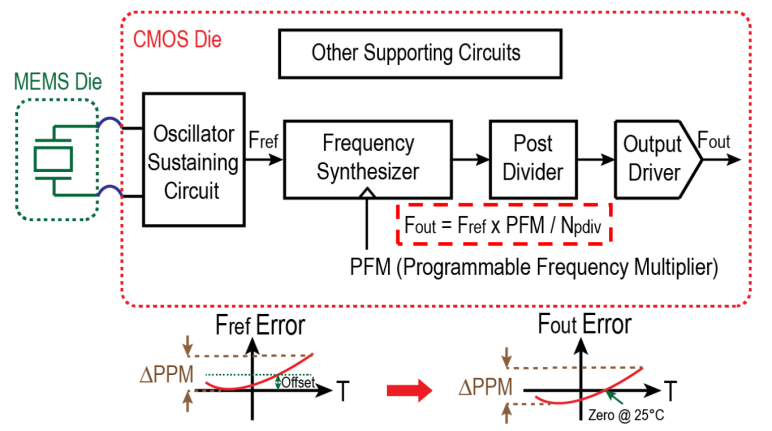
Output stability matches reference resonator
MEMS-Based Programmable Oscillator (TCXO)
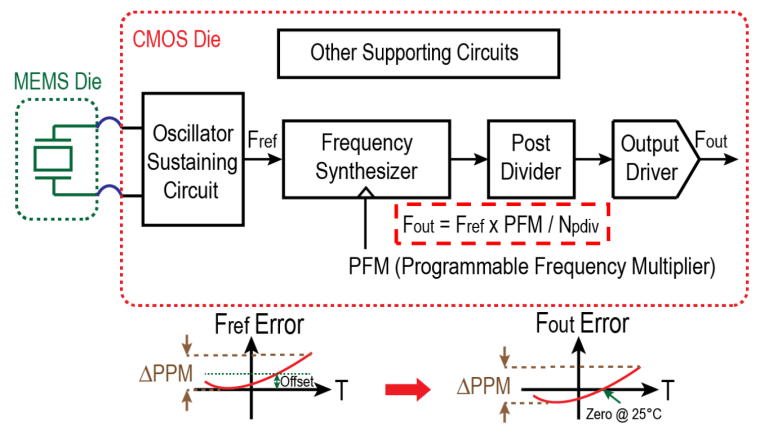
Temperature-to-Digital Converter (TDC) is needed
TDC Specifications
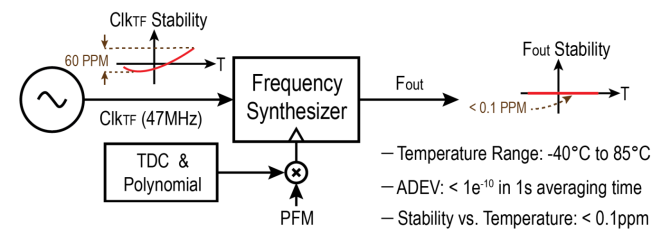
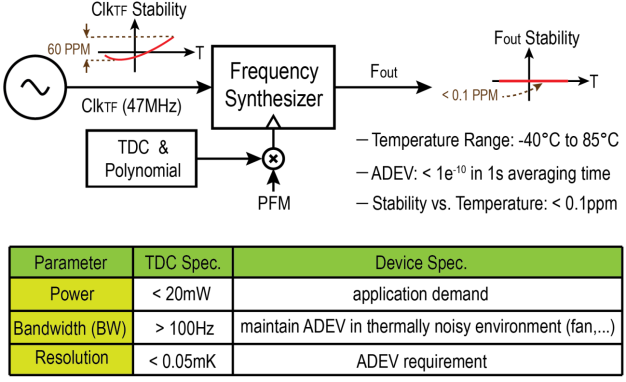
State-of-the-Art TDCs
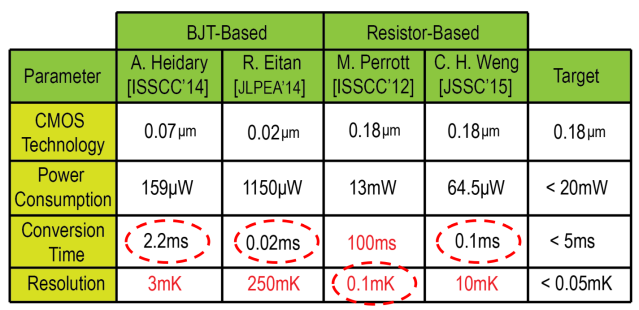
Prior Architectures Unsuitable
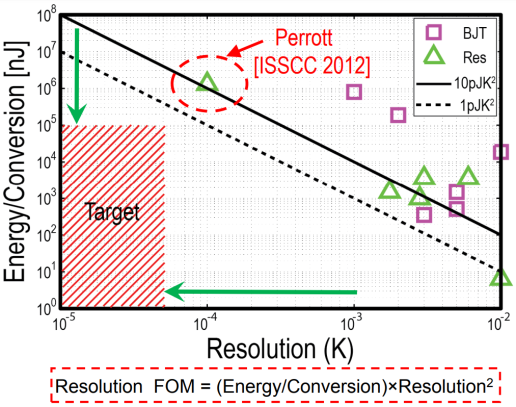
Dual-MEMS Resonator TDC
Different temperature coefficients (TC) for two clocks:
- Frequency ratio indicates temperature
- TempSense clock (ClkTS): TC = -7ppm/K
- TempFlat clock(ClkTF): TC < 1ppm/K
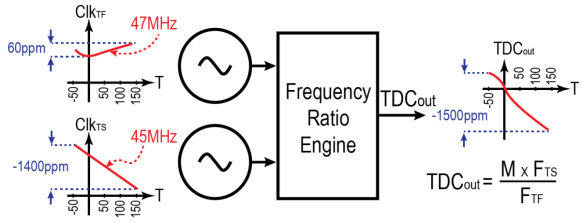
Frequency Ratio Measurement Techniques
- Reciprocal counting method
- Counts OSC1’s number of cycles in a time window set by OSC2 and counter2

Proposed Ratio Engine
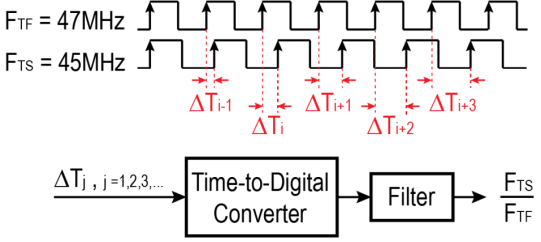
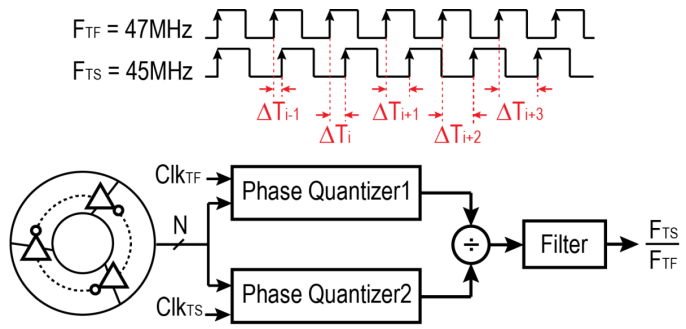
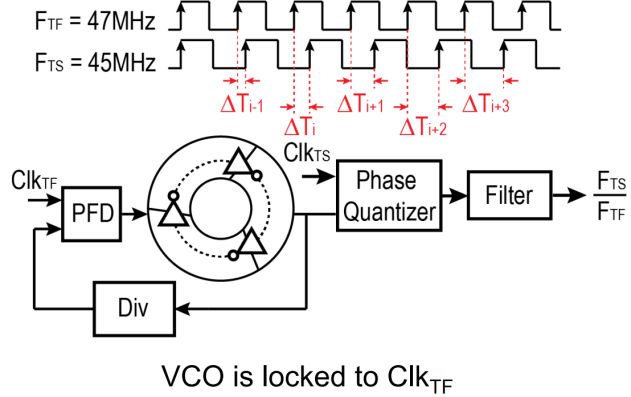
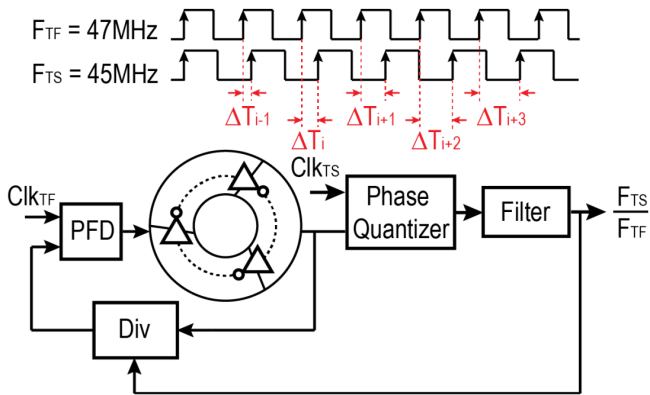
Implementation Flow

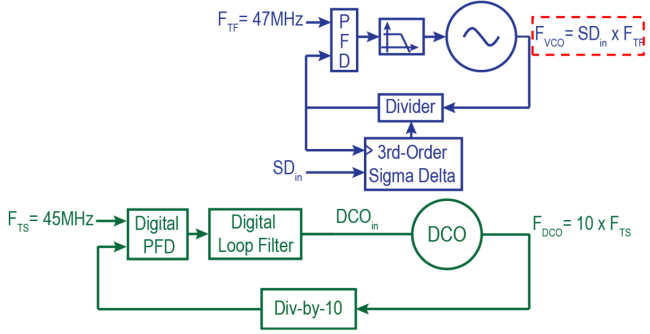
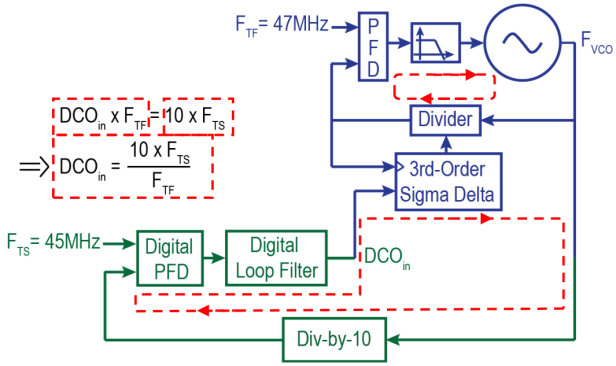
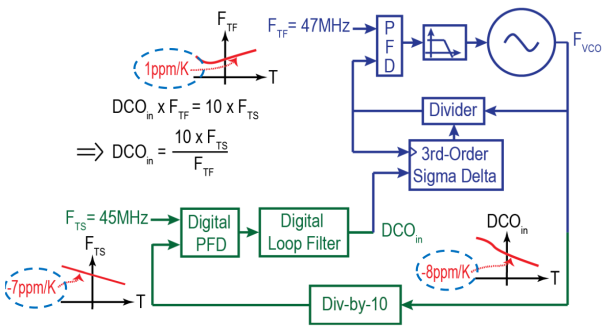
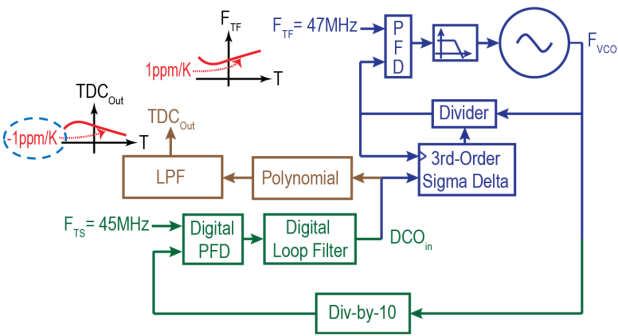
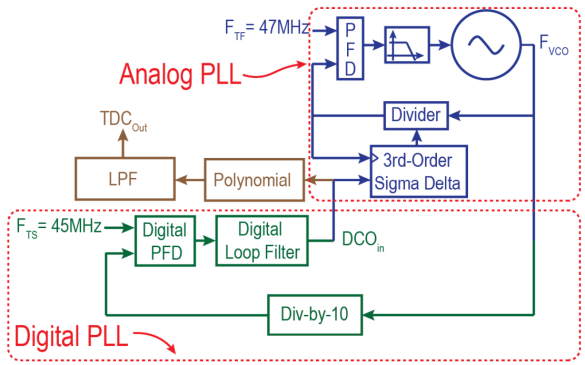
More Details
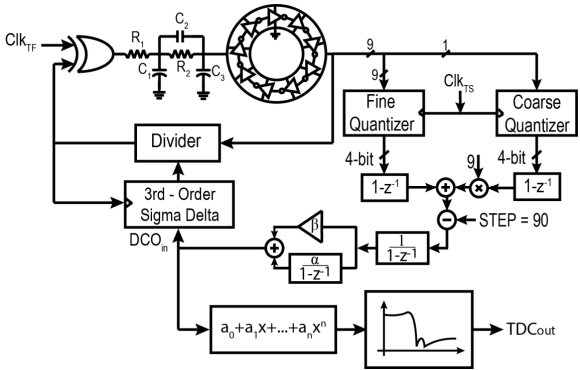
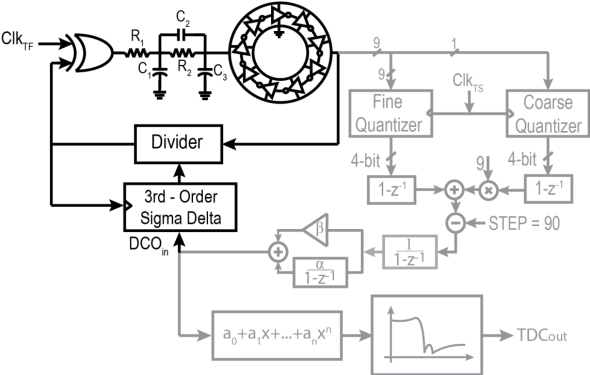
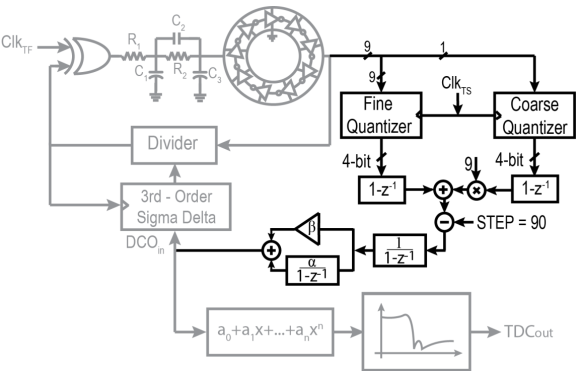
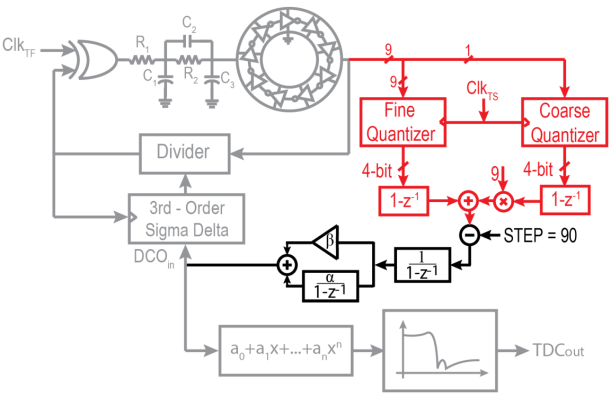
Digital PFD
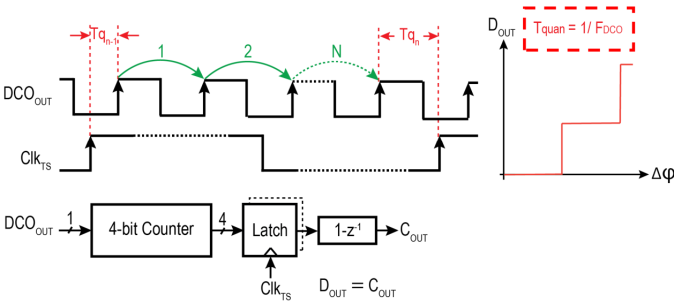
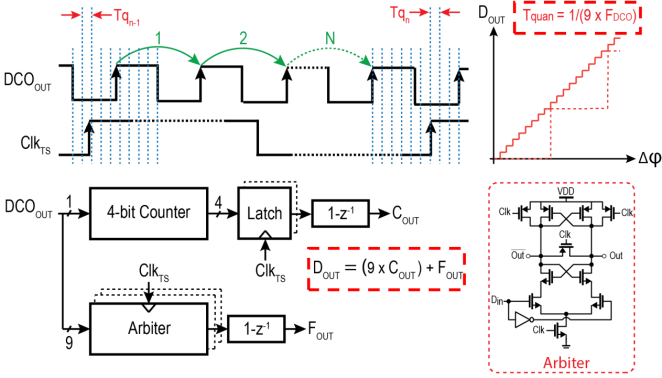
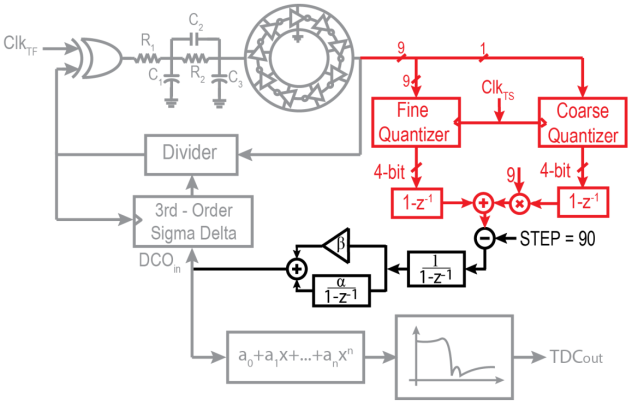
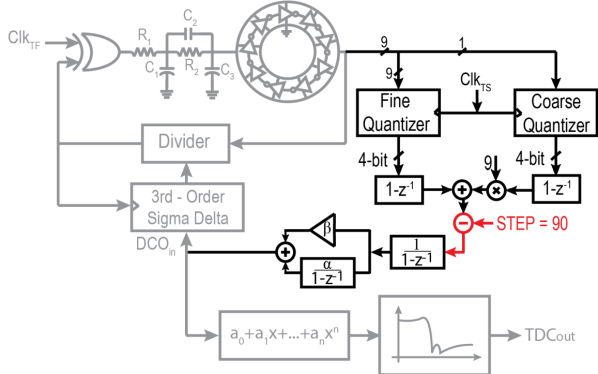
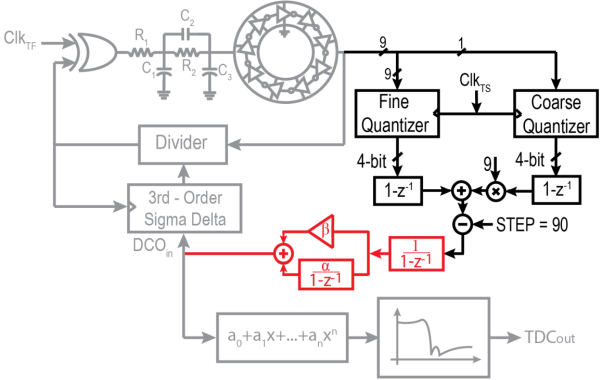
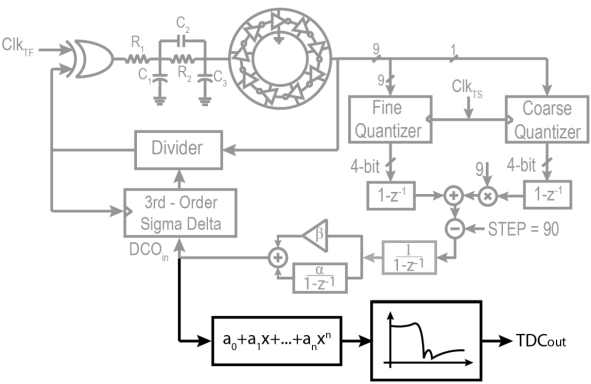
Chip Micrograph
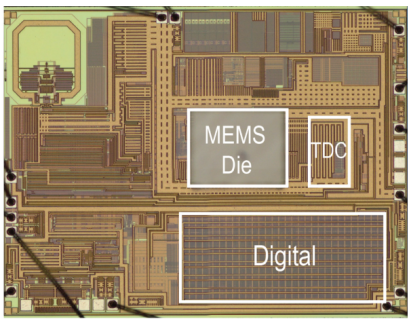
- 0.18µm CMOS
- 0.54mm2 (Resonator included)
- 12mA current for:
- Sustaining circuits
- Frequency ratio engine
- Digital
- Supply voltage: 1.6V
Resolution Measurement Setup
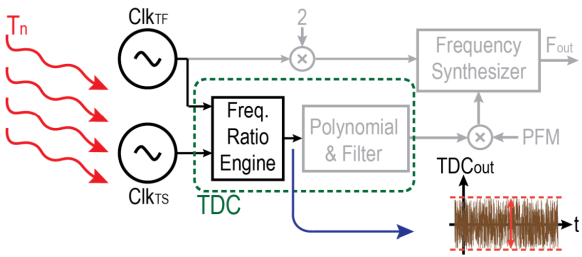
Thermal insulator is needed
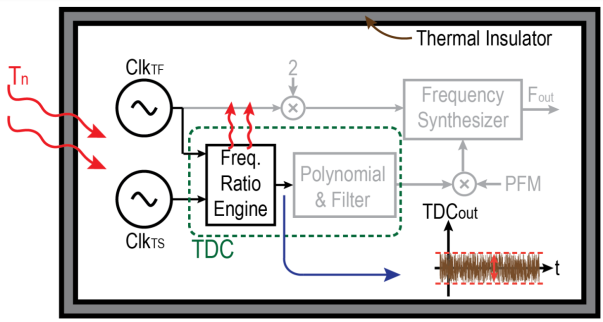
Environmental noise dominates the TDC resolution
Resolution Measurement Setup
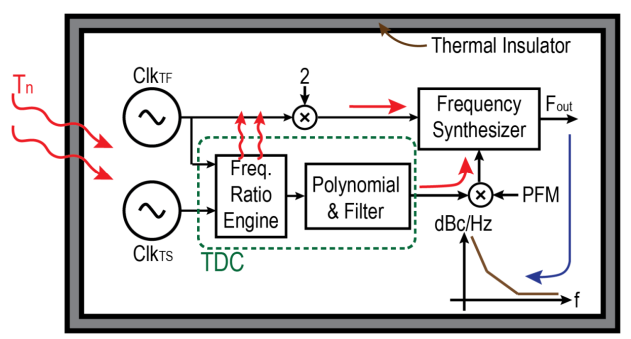
Instead of TDC output, clock PN is measured
TDC Contribution on PN
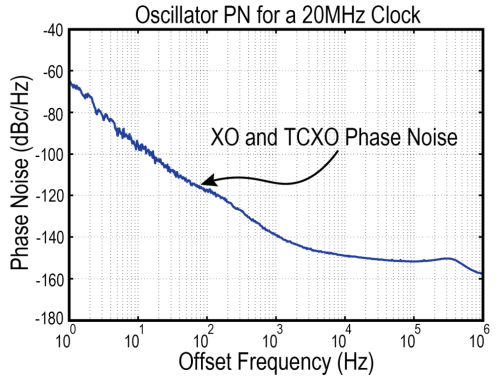
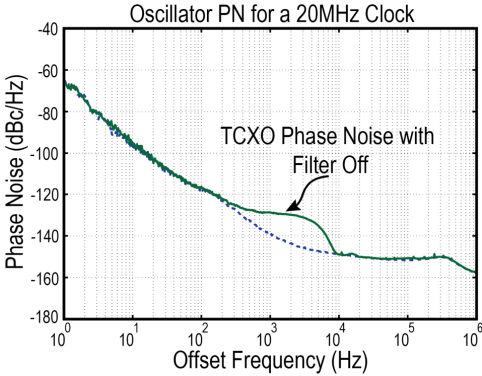
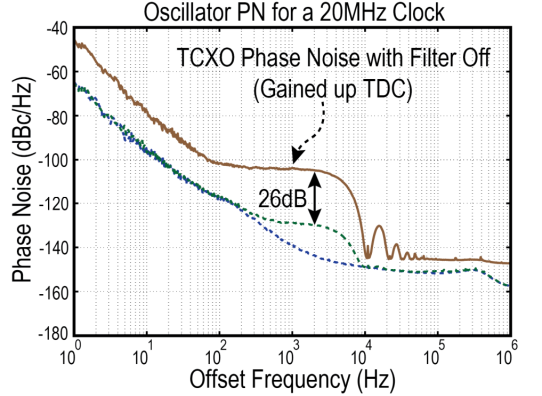
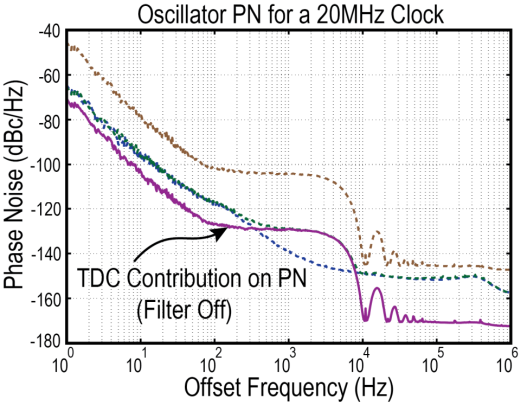
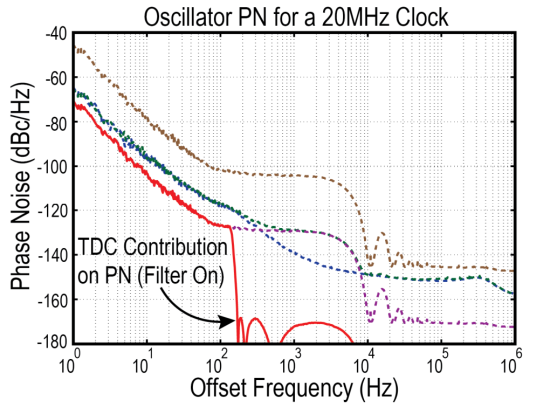
TCXO with Gained-up TDC
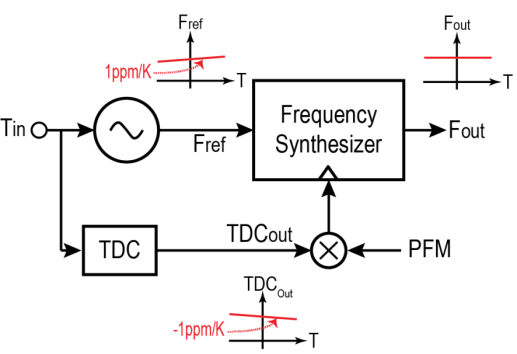
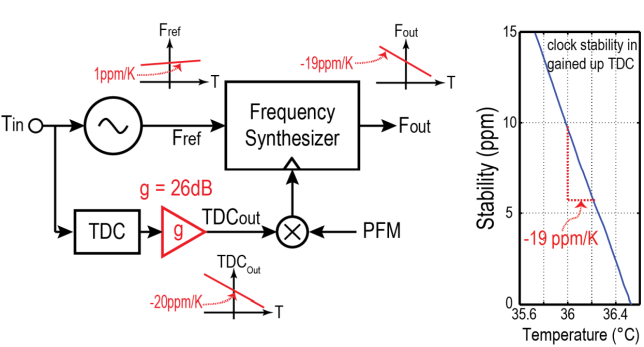
TDC has 40µK resolution over a BW of 130Hz
MEMS Resonators’ Stability Measurements
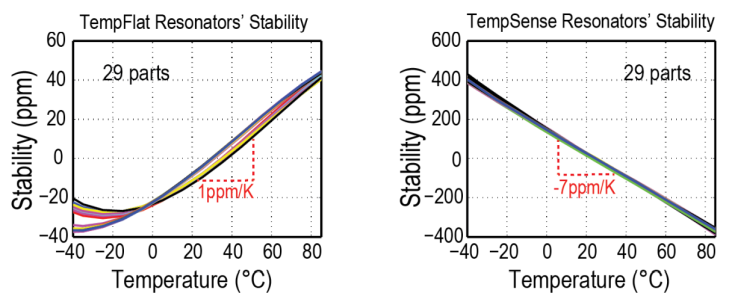
Measured TCXO’s Stability
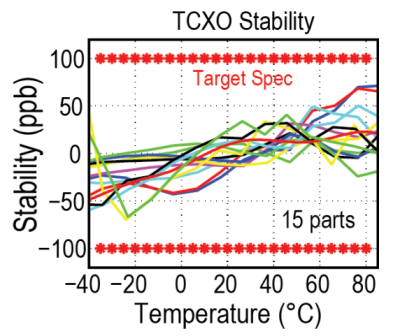
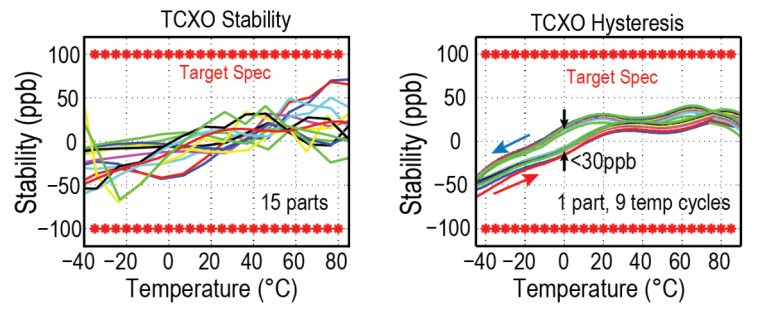
Allan Deviation Measurement
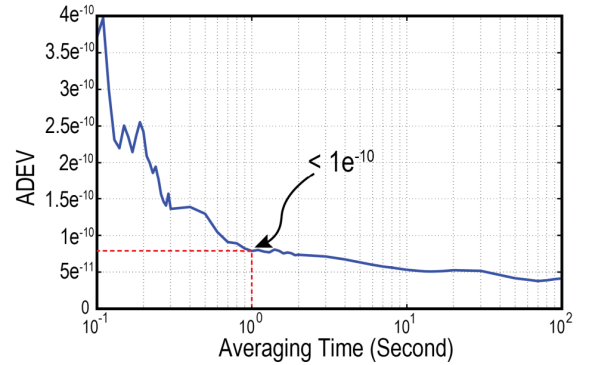
TCXO meets the ADEV target of < 1e-10
Comparison Table
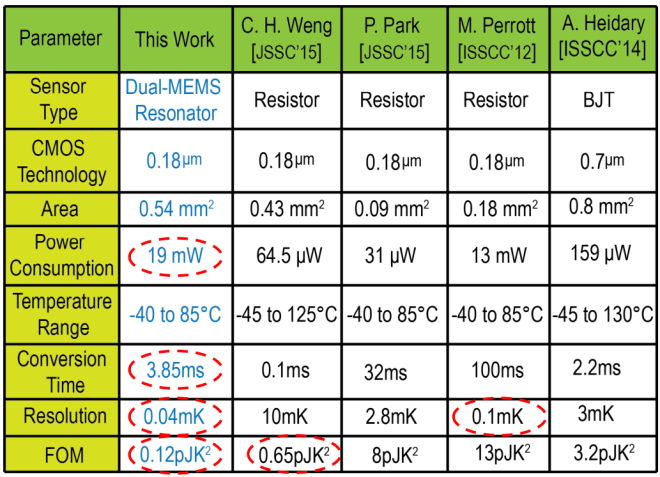
Energy/Conversion vs. Resolution
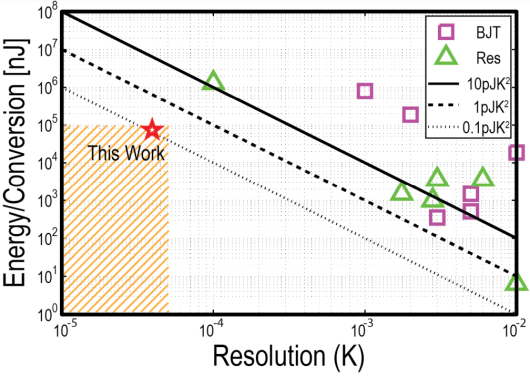
Resolution FOM = (Energy/Conversion)×Resolution2
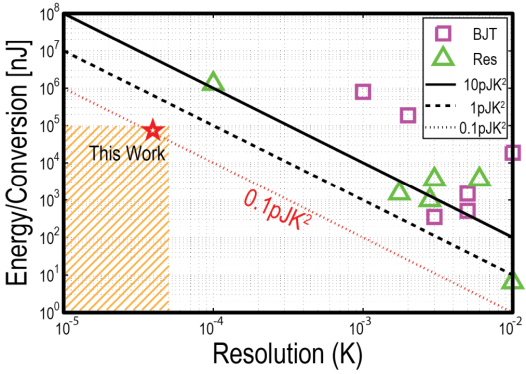
Resolution FOM = (Energy/Conversion)×Resolution2
Conclusions
1. The first of a new category of the temperature sensors
2. Dual-MEMS-Resonator TDC:
- Resolution of 40µK → 2.5x improvement
- Resolution FOM of 0.12pJK2 → 5.5x improvement
3. MEMS-Based Oscillator for telecom applications:
- Allan Deviation of < 1e-10 in 1s averaging time
- Frequency stability of < ±0.1ppm
- Temperature range of -40°C to 85°C
Acknowledgement
- Prof. Kofi Makinwa for his support, review, and comments!
- Nazariy Tshchynskyy, Anton Prygrodskyi and Trushal Chokshi from SiTime for their dedicated support during the measurements